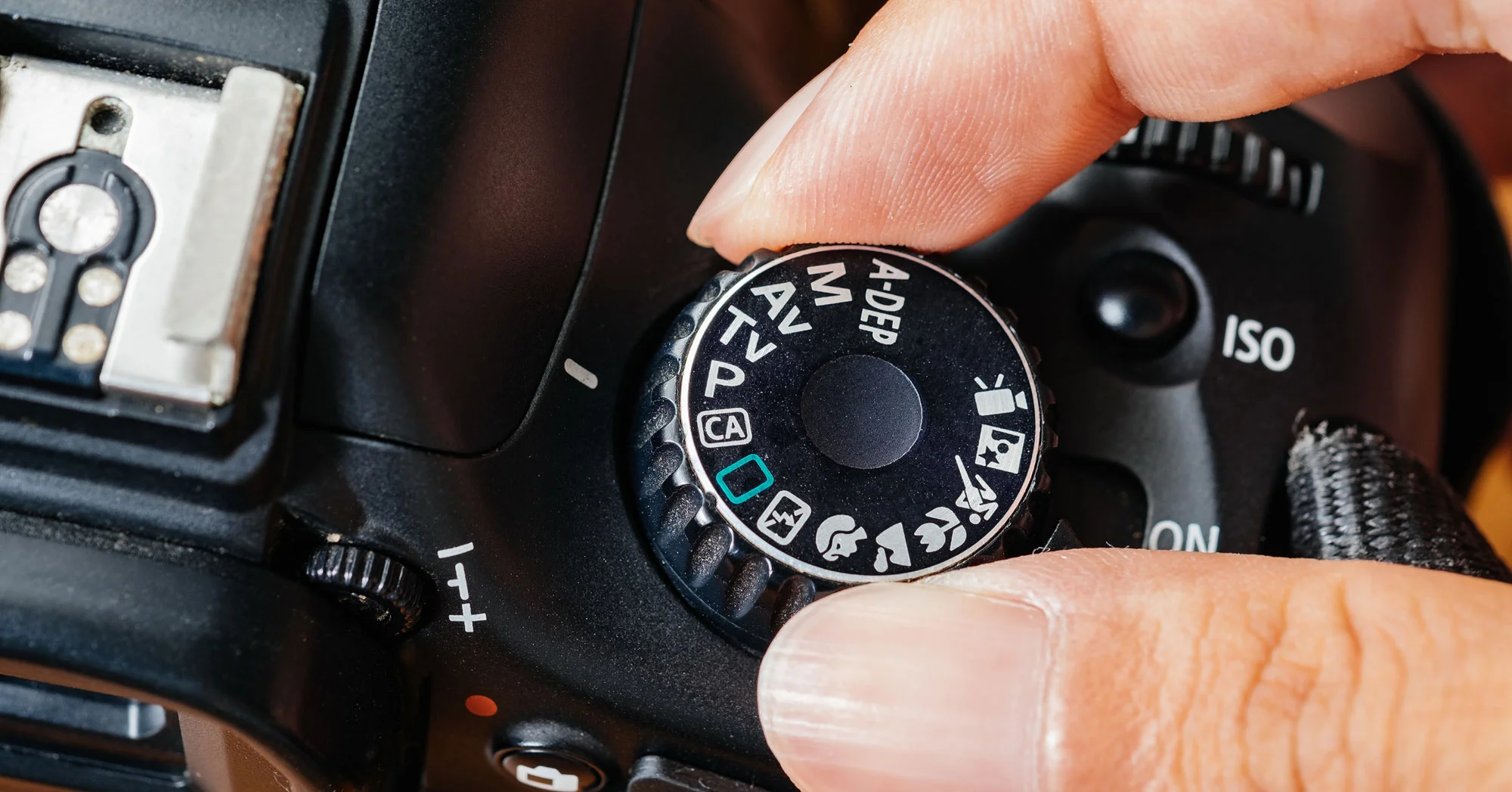Back to Basics: The Camera Modes that Count!
A characteristically cluttered Mode Dial.
I suspect that, like myself, most photographers begin their quest for artistic greatness with their camera firmly locked into Auto. Given the number of buttons and knobs that adorn the contemporary camera, it is little wonder that many newcomers to the discipline are reluctant to set their Mode Dial to anything else. To make matters worse, the Mode Dial itself has become home to an array of shooting options designed to make the art simpler but which often serve to do just the opposite.
Before we can begin looking at the various alternatives that you might find on your camera’s Mode Dial, it is worth first thinking about the number of light-altering controls that your camera has at its disposal. Despite the enormous advances that technology has made since the days of phosphor flashbulbs, the humble photograph remains a product of only aperture, shutter speed and ISO. Even the most sophisticated shooting modes buried deep within the bowels of your camera’s menu system are the creation of these three simple parameters.
One of photography’s biggest advancements has been the rather recently acquired ability of the camera to calculate the “correct” aperture and shutter speed for itself. Cameras today are fitted with integrated metering units which attempt to match a scene with an appropriate aperture and shutter speed combination known as the exposure value (EV). There are several means by which your camera can compute the supposed ideal EV but what’s important to understand is that the result of this computation is little more than an opinion.
A classically underexposed subject.
As with all opinions, the camera’s should be treated with a healthy dose of scepticism and ought to be thoroughly inspected as it is quite often wrong. Wayward assessments of the EV are solely responsible for every family photo you have ever seen where the grinning individuals stand in shadow and the background is a perfectly lit blue sky. The camera is blissfully unaware of our enduring love for the subjects in the photo and instead focuses its attention on coping with the brightest part of the scene, the boundless blue. Presently, cameras lack our sentient abilities and until the day comes when they do, they are going to need some assistance when deciding upon the truly correct exposure value.
To aid a camera in understanding just how far wrong its interpretation of reality is, photographers need a way of compensating for the difference between the metered EV and the truth. Unsurprisingly, all cameras today include an exposure compensation value and to illustrate just how that value might be useful, let’s consider the unfortunate family portrait once more. It is likely that the individuals in the photo are one or two stops underexposed – hence their silhouetted appearance – and by setting the exposure compensation value to +2, the camera now knows to take its EV and to bump it up by two stops. A 2-stop increase in exposure will see the image becoming significantly brighter, revealing the grinning subjects within. Naturally, the opposite is also true: the camera can be instructed to underexpose relative to its calculated EV by dialling in a negative exposure compensation value.
Typical camera settings with +2 stops of exposure compensation dialled in.
So, what does this all have to do with the camera mode, you may ask? Well, despite the myriads of options you may find on some Mode Dials, Program mode (P), Aperture-Priority (Av) and Shutter-Priority (Tv) provide all the control that one could possibly wield over the camera’s metering and the resulting selection of aperture and shutter speed.
In Program mode, the camera retains complete jurisdiction over the aperture and shutter but, unlike with fully automatic shooting, allows the user to input an exposure compensation value. Program mode is a particularly useful setting for those taking their first steps out of Auto as the only additional thought required is to decide whether or not the camera has got the EV correct and, consequently, if any exposure compensation is necessary.
The relatively simple mode dial of a Canon 7D.
However, despite the simplification that Program mode offers, relinquishing control over both aperture and shutter speed is giving up a fair bit. After all, the two settings are as much artistic tools as they are mere manipulators of image brightness. To give photographers a little more authority while still allowing them to leverage all the computing power crammed into the modern camera, Aperture-Priority and Shutter-Priority were created. In Aperture-Priority mode the aperture is set manually by the photographer along with any exposure compensation, should it be required. It is left up to the camera to then select the appropriate shutter speed for the shot. Likewise, when shooting using Shutter-Priority, the photographer sets the shutter speed he or she desires, leaving the camera to select an appropriate aperture.
With the amount of flexibility afforded by the Program, Aperture- and Shutter-Priority modes, you may be left questioning why the other camera modes exist, and I suspect the answer lies with the marketers. Canon, for example, has a host of camera modes on their entry-level devices but only the three mentioned here appear on their professional camera models. Sports mode, Portrait mode and other semi-automatic modes simply don’t exist when dealing with high-end gear and why should they? They have nothing new to bring to the table.
The point to all this is that step up from fully automatic shooting is nowhere near as daunting as it might seem. All one needs is a rudimentary understanding of exposure value and the related exposure compensation and you’re set. Ignore any markings on your Mode Dial that don’t say P, Av or Tv and you’re well on your way to photographic emancipation.



